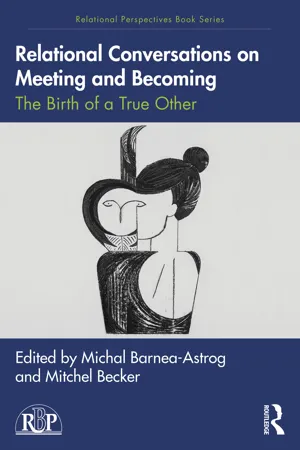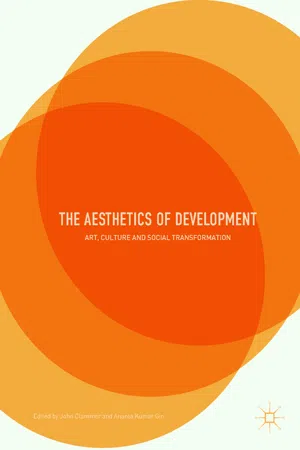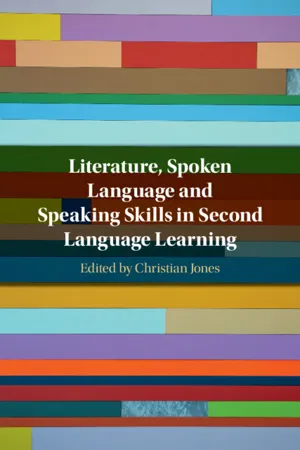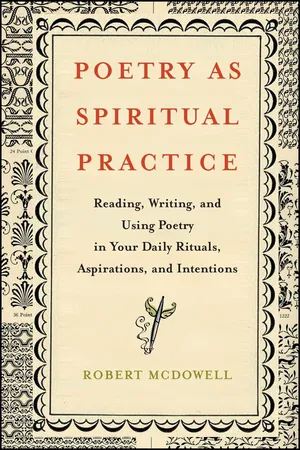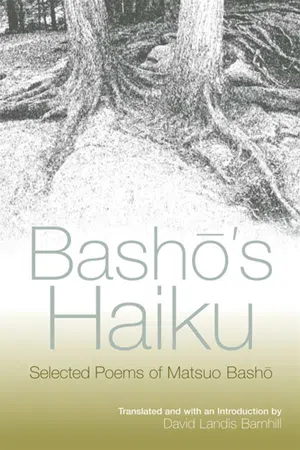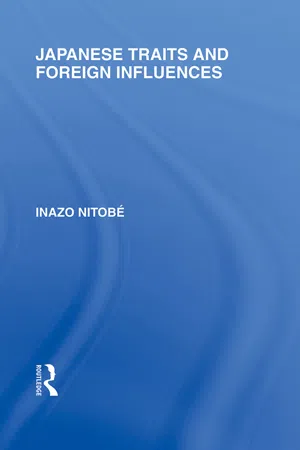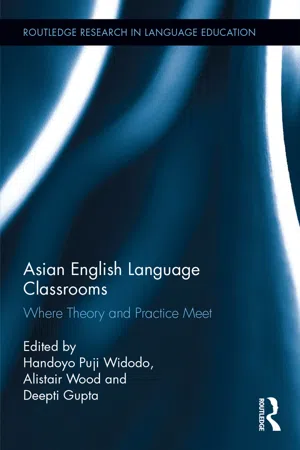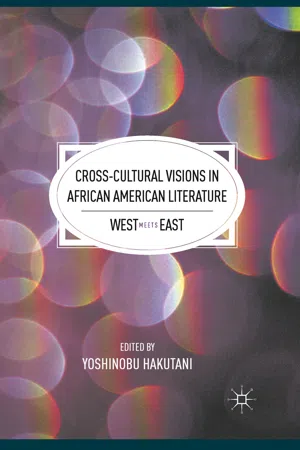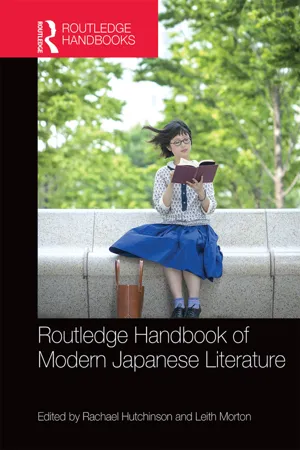Literature
Haiku
Haiku is a traditional form of Japanese poetry consisting of three lines with a syllable pattern of 5-7-5. It often focuses on nature and evokes a sense of simplicity and beauty. Haiku typically captures a fleeting moment or emotion, using vivid imagery and sensory language to convey profound insights in a concise and contemplative manner.
Written by Perlego with AI-assistance
Related key terms
1 of 5
12 Key excerpts on "Haiku"
- eBook - ePub
Relational Conversations on Meeting and Becoming
The Birth of a True Other
- Michal Barnea-Astrog, Mitchel Becker, Michal Barnea-Astrog, Mitchel Becker(Authors)
- 2022(Publication Date)
- Routledge(Publisher)
Winnicott (1984) once said: “As years go by I begin to grow smaller” (pp. 221–222). I wish to imbue my clinical work with this quality.Haiku
Originating in Japan about five hundred years ago, the Haiku is the shortest of all the poetic styles both in the East and the West. Traditional Japanese Haiku consists of three phrases that usually contain seventeen syllables in total: in the first phrase five syllables, in the second seven and in the third five. It is acceptable to deviate from this number of syllables, and in many poems there is one longer phrase of six syllables instead of five, or eight instead of seven. The Haiku evolved from the Tanka, which contained two additional verses with seven phrases each. Both Tanka and Haiku were preceded by the Renga: a group of inter-related Tanka poems. In addition to traditional Haiku, there is also a free rhythm Haiku. The free Haiku superseded the traditional form-content rules favouring a spontaneous expression of thoughts and feelings in the spirit of the Haiku. The three-phase structure is no longer used, and the number of syllables is generally arbitrary (Arntzen, 2007 ).Haiku captures the moment when perceived nature meets the psychic experience (Reichhold, 2013 ). There is no rhythm, and oftentimes the traditional Haiku incorporates a so-called season word, implying the time of year in which the poetic scene occurs. When the poem depicts a seasonal image, a rapport is formed between parts of the poem, creating an unexpected interval between the images of nature and the inner psyche, leading to a moment of revelation, a sense of truth.My childhood home Crying, I hold my umbilical cord The year ends(Matsuo Bashō)2Haiku poetry is a clear, lucid expression of an experience, which does not employ a complex metaphoric. It directly evokes a lively moment with all its “suchness” (Raz, 2011 ). Similar to Japanese Zen paintings, the Haiku poem leaves an empty space where one does not think about the poem, but experiences it with the senses. The secret lies in the charged balance between the stated and the unstated, and in the ability to create a space from which the form, the sound and the word emerge (Elitzur, 2017 - eBook - PDF
The Aesthetics of Development
Art, Culture and Social Transformation
- John Clammer, Ananta Kumar Giri, John Clammer, Ananta Kumar Giri(Authors)
- 2017(Publication Date)
- Palgrave Macmillan(Publisher)
Haiku RULES AND PHILOSOPHY OF BEING “Haiku is the creation of things that already exist in their own right, but need the poet so that they may ‘come to the full stature of a man’”, says Reginald H. Blyth (1981). The Haiku uses sensory language to capture a feeling or image. It is often inspired by an element of nature, a moment of beauty or another 258 A. GRIEDER poignant experience. In Japanese tradition, the secret of writing Haiku is said to consist of being observant and appreciating nature. Very often, words like “cherry blossom”, “snow” or “mosquitoes” indicate the sea- sons in which season the Haiku is set. Of a rich relationship between time and objects, the Haiku testifies very often to a strong sense of ageing, growing, dying in order to feel the tide of emotion that can flow from 12 words (Blyth 1981). For the Haiku poet, the constellation of things expresses what he feels. According to Krusche (1997: 118), objects have the capacity to absorb a specific feeling. In Haiku philosophy, the human being is considered to be in unity with the surrounding nature or environment. The realization of this unity does not happen through “knowledge” but through a sen- sual experience. A Haiku Poems is this sensual experience. The shortness of the “old pond” is one of the Haiku rules. A Haiku is composed of 17 syllables (divided into 3 lines of 5, 7 and 5 syllables each), which is equivalent to the act of breathing. Influenced by Zen and Taoism, Haiku is expected to be a small conduit that goes into a greater thought. In the examination of the small things, the seemingly insignificant, the truth of the greater natural world can be revealed and all-governing laws, principles or commonalities can be discovered. In terms of philosophy, the truth of the microcosms implies the truth of the macrocosm. 5 The I is most often absent, or present through its absence. This idea is expressed in another Haiku written by Basho: Along this way goes no one this autumn evening. - eBook - ePub
- James Shea, Grant Caldwell, James Shea, Grant Caldwell(Authors)
- 2023(Publication Date)
- Routledge(Publisher)
Le Ton beau de Marot: In Praise of the Music of Language—although I must say it isn’t entirely clear whether Hofstadter is describing Japanese or English Haiku. If he thinks he’s describing Japanese Haiku, he evidently hasn’t seen, let alone read, any of the Haiku the majority of Japanese writers compose.The Haiku Society of America, which formed a committee to work out definitions, was more circumspect and made a distinction between the trunk and its branches. After two years of deliberations, the committee came up with the following definitions:- An unrhymed Japanese poem recording the essence of a moment keenly perceived, in which Nature is linked to human nature. It usually consists of seventeen onji.
- A foreign adaptation of 1, usually written in three lines totaling fewer than seventeen syllables.
Even this cautious description of Japanese Haiku, as far as I’m concerned, leaves much to be desired. Why “a moment keenly perceived”? Why in a moment so perceived must “Nature” be “linked to human nature”? Above all, why introduce the pedantic and utterly wrongheaded term onji where the word “syllable” will do just fine?My quibbles aside, the Haiku Society does not say, as Hofstadter does, that the Japanese Haiku consists of “seventeen syllables arranged in three lines [emphasis mine] containing five, seven, and five syllables, respectively.” This is important. The best definition of the traditional Haiku I’ve seen says that it is a one-line poem with two main descriptive elements that can’t be divided into lines. The “traditional Haiku” means one that is composed of five, seven, five, or a total of seventeen syllables.More recently, the avant-garde Haiku poet Natsuishi Ban’ya has offered the following definition:The Haiku … is composed of two, three, or four short phrases (shōsetsu - Christian Jones(Author)
- 2019(Publication Date)
- Cambridge University Press(Publisher)
It then describes a quantitative, corpus-based study which involved the analysis of textual and linguistic features of English language Haiku writing. The data, consisting of a total of 2,017 Haiku poems written by 204 first-year engineering students at a Japanese public university, were submitted to statistical analyses. The results illustrate some specific features of English language Haiku produced by Japanese L2 writers: Haiku poetry is a short, descriptive text which presents each writer’ s emotional reactions to his or her daily life, and it also includes such spoken language features as the twelve verbs most frequently used in spoken discourse (Biber and Conrad 2010), evaluative and emotive adjectives, contractions and vague language. This study suggests that the task of composing Haiku in English can play an important role in L2 learning in terms of raising learners’ awareness of typical spoken forms in the target language. Introduction Haiku – a Japanese three-line poem containing seventeen syllables in a 5–7–5 syllable pattern with the usage of a seasonal reference 1 and a cutting word 2 – is used for different purposes in various contexts around the world. Nowadays, its usage is not limited to Japanese as a first language (L1). The application of Haiku ranges from literacy practice and literary/cultural studies to therapeutic practice. In Japan, for example, Haiku is officially introduced in an authorised 96 textbook in the third-grade Japanese language course (kokugo) in order for 9- year-olds to develop their L1 linguistic awareness. Additionally, Haiku writing is used for non-Japanese students to study Japanese literature and/or develop cultural knowledge in the United States (Stokely 2000). Haiku writing is also used as a therapy through which patients compose poems as a way to release their negative emotions (Sky Hiltunen 2005).- eBook - ePub
Poetry as Spiritual Practice
Reading, Writing, and Using Poetry in Your Daily Rituals, Aspirations, and Intentions
- Robert McDowell(Author)
- 2008(Publication Date)
- Atria Books(Publisher)
It seems that every generation of American poets produces at least some memorable poems in this supposedly simple, unadorned form. A well-written Haiku is a beautiful vessel, like a seed (a vessel containing life itself). It’s a tricky business, attaining the perfection of a seed. If wisdom is an essential component of Haiku, then the form itself encourages the writer to traverse the precarious path toward emotional, spiritual breakthrough.“How long,” the pilgrim asked, “has each tree had seven limbs, and birds’ nests on all but the lower two limbs?” “Forever,” the farmer replied. “Since before the question could even be conceived. Since the beginning, five-seven-five.”A legend has it that one day a pilgrim visited a grove of five sacred oak trees. Out of each tree grew seven limbs, and on all but the bottom two limbs of each tree perched a bird’s nest. A farmer rested under the shade of the tree nearest the road, where a pilgrim joined him.Haiku in Japanese literally means “beginning-verse.” It is an excellent form for a writer in English to study and practice if one wishes to write in syllabics, which means counting the syllables, rather than the feet, in each line.The Haiku is made up of seventeen syllables. Lines one and three contain five syllables, while line two contains seven. Traditionally, Haiku includes the name of a season, or a word or words that suggest a particular season, but in contemporary American Haiku this requirement is often discarded.Basho (1644–1694), a Zen Buddhist student in later life, is generally considered the great master of Haiku. Buson (1715–1783) and Issa (1763–1827) are also widely celebrated as profound masters of the form.As Basho and others who followed him knew, the spiritual journey is possible only if we learn how to pay attention to the smallest details, those facts we overlook so easily because we are in a hurry, too busy, too anxious to slow down, to watch and wait. This demanding process of mindfulness requires the patience of an earthworm, a snail. You strive to transport yourself into the thready veins of the apple blossom, the tiny bones of a bird’s ear. Haiku asks us to slow down, to recognize and appreciate the minute details that make up and give substance to life itself. As Robert Frost once said, poetry is a way of remembering what it would impoverish us to forget. Haiku is an effective structure for mindfulness and memory. - eBook - PDF
Bashō's Haiku
Selected Poems of Matsuo Bashō
- Matsuo Basho, Matsuo Bashō, David Landis Barnhill(Authors)
- 2012(Publication Date)
- SUNY Press(Publisher)
In particular, Shiki emphasized that a Haiku is a completely independent poem, not part of a linked-verse. During most of the twentieth century, Western scholars and translators used the term Haiku for both modern Haiku and premodern hokku. and Haiku has thus come to be the generally accepted term in the West for both premod- ern and modern forms. In addition, Basho ¯ ’s hokku now function in modern culture (both in Japan and the West) the same way Shiki’s Haiku does, as independent verses. 4 B a s h o ¯ ’ s H a i k u Such a situation poses a problem for translators. Should we be historically proper and speak of Basho ¯ ’s hokku poems and haikai poetry, or should we accept the modern if anachronistic idiom and speak of his Haiku poetry? Especially for translations intended for both a scholarly and a general audience, I simply don’t think there is a fully satisfactory approach. As an indica- tion of the complexity involved, the eminent scholar Haruo Shi- rane uses a combined approach in his Early Modern Japanese Literature (New York: Columbia University Press, 2002). He has sections on “Composing Haiku” (187) and “The Poetics of Haiku” (202) and yet speaks of Basho ¯ ’s poems as hokku. In a similar way, I use the term hokku when talking about Basho ¯ ’s verse and haikai when referring to his particular conception of art. However, I use the term Haiku and the Haiku tradition to refer to the poetic form more generally when I am referring to the long tradition that includes premodern hokku and modern Haiku. And since Haiku is the more familiar term, I have used it in the title of this book. THE STRUCTURE OF Haiku It is common knowledge that the traditional form of a Japanese Haiku is three lines with seven, five, and seven syllables. Unfor- tunately, this common knowledge is not quite accurate. As Hiroaki Sato has argued, Japanese hokku and Haiku are not lin- eated in the way we are used to in the West. - eBook - ePub
The Princeton Encyclopedia of Poetry and Poetics
Fourth Edition
- Stephen Cushman, Clare Cavanagh, Jahan Ramazani, Paul Rouzer, Stephen Cushman, Clare Cavanagh, Jahan Ramazani, Paul Rouzer(Authors)
- 2012(Publication Date)
- Princeton University Press(Publisher)
Haiku (1949–52); K. Yasuda, The Japanese Haiku (1957); H. Henderson, An Introduction to Haiku (1958); E. Miner, Japanese Linked Poetry (1979); From the Country of Eight Islands , ed. and trans. H. Sato and B. Watson (1981); The Monkey’s Straw Raincoat , ed. and trans. E. Miner and H. Odagiri (1981); W. Higginson, The Haiku Handbook (1985); H. Shirane, “Matsuo Bashō and the Poetics of Scent,” HJAS 42 (1992); Bashō and His Interpreters , trans. M. Ueda (1992); W. Higginson, The Haiku Seasons (1996); H. Shirane, Traces of Dreams (1998); The Path of Flowering Thorn , trans. M. Ueda (1998)—on Buson; Early Modern Japanese Literature , ed. H. Shirane and B. James (2002); D. L. Barnhill, Bashō’s Haiku (2004); M. Ueda, Dew on the Grass (2004)—on Issa; C. A. Crowley, Haikai Poet Yosa Buson and the Bashō Revival (2007).C. A. CROWLEYHaiku, WESTERN
I. Before 1910II. Through the Two World WarsIII. Resurgence in the 1950sFrom the time of Japonisme in painting (1850–1910), Japanese arts began to exert an unprecedented influence on Western art and artists. In the exchange between Japan and the West, the verse practice known as Haiku —the term was coined by Masoka Shiki about 1900—would come to exert great influence over the entirety of the 20th c. and after. In Western langs., Haiku is commonly arranged into three lines, a rendition of the Japanese syllabic pattern of five, seven, and five *moras, although, in Japanese, these often appear in a single line. An alternate designation is hokku (first verse), which implies a longer string of linked verses known as *renga . Haiku practice in the West typically presents verses rich in *imagery, often juxtaposed in startling combinations. Furthermore, “stepping stones” of images running through longer verses (as Allen Ginsberg called Ezra Pound’s practice) bring Western Haiku into resemblance to traditional Japanese renga, the collaborative linked verse form of which *haikai - eBook - ePub
- Inazo Nitobe(Author)
- 2010(Publication Date)
- Routledge(Publisher)
ON Haiku
“Canons of verse I introduced, and neatly chiselled with, To look, to scan: to plot, to plan: to twist, to turn, to woo: On all to spy; in all to pry.” —Aristophanes, “The Frogs.”I
AMONG the numerous forms of literary compositions that have come into existence in Japan, in order to provide modes of expression suitable to various mental moods and temperaments, none has attracted in Europe as much attention as Haiku —perhaps the briefest rhetorical device anywhere invented. Consisting of only seventeen syllables divided into three lines, it shares some features of the sonnet and can perhaps be best compared with it. In the standard structure of the sonnet, there are three periods or breaks in thought, expressed in the fifth line of the octave, the beginning of the sestet, and in the last line, which should be the climax. It is this tripartite character of the sonnet that can be compared with the three lines of the Haiku . Otherwise the two forms are very remote from each other, both in their object and technique. There are certain other forms in Europe, especially in countries of Romance and Celtic languages, which are almost as short. Some forms of Welsh prosody—such as the cywydd metre, consisting of an indefinite number of lines of seven syllables each, or the englyn form consisting of four lines of 10, 6, 7, 7 syllables respectively—are perhaps the best examples of poetical brevity in Europe. Or perhaps Spain affords more compact forms in solea, seguidilla and cuarteta. But these forms have scarcely been adopted beyond the frontiers of their native land. And as far as a geographical diffusion is concerned, it is only the triolet that may be said to have won any degree of universality in Europe and America. The triolet has not changed its form ever since its beginning in the 13th century. Consisting of only eight lines, it has its first, fourth and seventh lines repeated, and again its second and eighth are repetitions. So, practically, it consists of five lines only—like our uta, - eBook - ePub
- Jessica Milner Davis(Author)
- 2006(Publication Date)
- Wayne State University Press(Publisher)
10Senryū: Japan’s Short Comic PoetryMasashi KobayashiSenryū and HaikuHaiku , short Japanese poems of seventeen syllables that capture a moment in time, are well known outside Japan. However, Japan’s short comic poetic genre senryū is not so well known. Senryū verses have the same seventeen-syllable form as Haiku , and both poems derive from the same origin. Since ancient times, the combination of lines of five and seven syllables has been the most natural syllabic pattern for Japanese poetry. The ancient poems waka ( Japanese songs) or tanka ( short songs) restrict themselves to thirty-one syllables, patterned in three lines of 5.7.5 (totaling seventeen syllables) plus two more lines of 7.7 (for a total of 17 + 14 = 31). Haiku and senryū , both of which developed from waka , retain the verse form of seventeen syllables arranged in the 5.7.5 pattern, following this ancient syllabic structure, but drop the last couplet.1During the Nara (710–94) and Heian periods (794–1185), verse-capping, or composing linked verses, was a popular game among aristocrats. Someone would make up a short verse, and someone else had to finish it. This was called renga ( linked verses). The first part of the verse, known as the hokku , was a triplet with three lines in the 5.7.5 syllable pattern. Hokku triplets later came to stand alone as poems in their own right, and the genre haikai , the ancestor of later Haiku , is said to have originated in 1499 when Chikuba Kyōginshū , the first anthology of haikai , was published.2There was another form of the game of linking verses, a reversed form, in which the first player composed two lines of seven syllables each (the last couplet of a poem) and the second player had to compose the first triplet. This was called maekuzuke , or “adding the second verse,” a practice I shall discuss later.3 Senryū developed from these three-line verse combinations. It is said to have started in 1757 when a broadsheet was printed giving the winning poems from a maekuzuke competition; thus senryū made its appearance 258 years later than haikai .4 Haikai was renamed Haiku in the Meiji era (1868–1912) by Masaoka Shiki (1867–1902), a great poet who made innovations and named the resulting poetic form Haiku . For simplicity’s sake, in this discussion we will not distinguish historically among haikai, hokku , and Haiku but will call them all by the modern name Haiku - eBook - ePub
Asian English Language Classrooms
Where Theory and Practice Meet
- Handoyo Widodo, Alistair Wood, Deepti Gupta, Handoyo Widodo, Alistair Wood, Deepti Gupta, Handoyo Puji Widodo, Alistair Wood, Deepti Gupta(Authors)
- 2017(Publication Date)
- Routledge(Publisher)
embarrassed) in the texts, their emotional contents were successfully presented in Haikus. This finding extends our understanding of Haiku writing and L2 writers. What we have known so far is that there was statistical evidence of a high frequency use of emotional words such as “happy” or “hot” in English Haiku and of the writer’s voice appearing more directly in English Haiku than Japanese traditional Haiku (Iida, 2012a). However, the results of the qualitative analysis of the Haikus in the current study show that while explicit words to describe emotions are used in poetry, the writer’s voice is not necessarily presented directly in the texts. This means that a poem describes a particular scene in the writer’s life story and leaves space for readers to interpret the content including the poet’s emotional states. This feature can be seen in Japanese traditional Haiku: Japanese Haiku consists of the description of a particular moment and the writers must insert spontaneous feelings in the texts through which they must first focus on and capture the moment immediately observed by the poets so as to share it with their readers (Higginson, 1985; Iida, 2012a). Therefore, no emotional word appeared in the texts. In this sense, similar to the characteristics of Japanese Haiku, English Haiku is based on the writer’s thoughts, which develop with surface-level scenery and deep-level psychological descriptions (Minagawa, 2007; Uesaka & Koushima, 2009).Pedagogical implications: teaching Haiku writing in Asian EFL contexts
The current study exemplifies the ability of EFL learners to express and understand personal events through L2 expressive writing. This finding provides implications for teaching poetry writing as a way to humanize the L2 composition classroom. As discussed earlier, one of the challenges of teaching English in EFL contexts is to make the English class dynamic, communicative, and alive by deconstructing the traditional language classroom. From theoretical and pedagogical perspectives, poetry writing, as a form of “meaningful literacy” (Hanauer, 2012b), can overcome this issue. As shown in each Haiku, poetry writing can enable L2 learners to be at the center of the learning process, to explore significant memories in their lives, and to work closely with their emotional contents in the moments. - eBook - PDF
Cross-Cultural Visions in African American Literature
West Meets East
- Y. Hakutani(Author)
- 2011(Publication Date)
- Palgrave Macmillan(Publisher)
His Haiku poems have been “jazzed up,” “blackened,” and “adapted” as a kinship member of an already specialized and diversified form of African American jazz music. Says Emanuel, The sounds of saxophones, trumpets, pianos, the voices with which they harmonize provide background for a radically different kind of poem, my innovation in 1992: jazz Haiku. Jazz Haiku are meant, ideally, to approximate the sound and style of jazz and more feasibly to reflect some of its natural techniques, history, and star performers. These Haiku conform to tradition only in their restriction to three and seventeen syl- lables in a 5-7-5 sequence. (“Sounds” MS, 8–9) For instance, in the next three poems of “Jazzanatomy,” “Jazzroads,” and “Jazzactions,” Emanuel represents “Jazz” as a personification that is continually mobile and easily adaptable to old or new places. Musicians call these various spatial eruptions of jazz “territories.” And its malleability reflects Jazz’s fluid nature to resist boundaries and to adapt to any geo- graphic site willing to hear it. In the first stanza of the three-line, four- stanza Haiku “Jazzanatomy,” Emanuel tells us what topics constitute Jazz’s subject matter. He says that, “EVERYTHING is jazz:/”; in the next line following the colon, Emanuel cites that “snails, jails, rails, males, females/” are the themes to be broadly explicated in the volume. These are repetitive lines from the prologue to section I entitled “PAGE ONE” in all capitals. Here, they function as a two-liner Haiku introduction to the section, as they do in Emanuel’s all other introductory sections in his varying styles of one-, two-, or four-liners. Inside, this two-liner expands into a full poem. And in the third line, which reads “snow white cotton bales,” Emanuel has inserted a kireji pause between the words “snow white” and “cotton bales” to emphasize Jazz’s southern birthing in the cotton kingdom (Ross xv). - eBook - ePub
- Rachael Hutchinson, Leith Douglas Morton, Rachael Hutchinson, Leith Douglas Morton(Authors)
- 2016(Publication Date)
- Routledge(Publisher)
isshun no haaku) the line “having passed over the green” is absolutely central to the poem’ (1988: 111). Okai does not add more than this, but another aspect of the poem’s charm is that the final line opens up the scene to include the poet’s awe and wonder at spring (and spring’s representative, the bee). The poet’s persona, like the reader of this poem, postpones closure on the scene: how long will the poet’s persona sit there on his patio, looking at the garden and wondering how far his bee will go from here? Without an answer to the question in the final line, there is no closure for the reader either. The bee’s flight, the persona’s musings and the reader’s own musings about the persona’s musings all can go on for an indefinite period of time. The similar approach to tanka shared by Satō, Okai and Tawara – all contemporary tanka poets – shows how Shiki’s and Takuboku’s handling of time in the thirty-one-syllable form, albeit in different ways, has become endemic to the genre. Shiki was able to create even shorter poems, his Haiku, which encapsulated a sense of long-elapsed time. To speak of a shared legacy left by Shiki and Takuboku, one may say that these experimental poets compelled their successors to appreciate time in their poetry. This focus on time, whether it is a brief ‘ah!’ moment or an unfolding eternity, has remained a salient feature of tanka and Haiku to this day and can also be seen in visual narratives like manga, prompting us to consider that short moments of time, however mundane or potentially revolutionary, are a significant aspect of the literary and visual arts of Japan.Notes
- 1 The poem Nanigoto mo omou koto naku / hi ichinichi / kasha no hibiki ni kokoro makasenu is found in Takuboku’s 1910 collection A Handful of Sand (Ichiaku no suna) (1910a: 55).
- 2 Nakamura Mitsuo argued that ‘In one sense, the path from Broken Commandment to The Quilt was the great path that led to the destruction [of modern Japanese literature]’ (1950: 75). This assessment, as Karatani Kōjin writes, ‘has attained the status of a truism in Japanese literary theory’ (1993: 76). This is still a contentious topic. Nakamura’s view has been balanced by critics like Kenneth G. Henshall, who delineates the particular qualities of different kinds of Naturalism in Meiji Japan (1981: 3–4).
- 3 Masaoka Shiki, ‘Utayomi ni atauru shō [5]’, (1898: 22). ‘The great reason why waka has become obsolete is how it makes a big lie out of something small.’
- 4 Shiki even faults the great Manyōshū poet Hitomaro (fl. ca. 680–700) for not being as direct as he could have been as in the poem: ‘Mononofu no / yaso ujikawa no / ajiroki ni / isayou nami no / yukue shirazu mo’ (I too go off / like the waves that disappear around / the stakes holding the nets / at the Uji River, the river of the eighty clans / powerful men all). Shiki felt the first three lines (the final three in English) were ‘superfluous’ (zeibutsu
Index pages curate the most relevant extracts from our library of academic textbooks. They’ve been created using an in-house natural language model (NLM), each adding context and meaning to key research topics.
